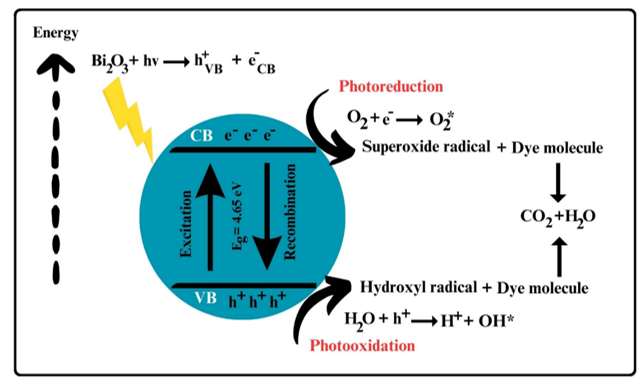
Water contamination is a pressing global issue with far-reaching environmental, health, and socio-economic consequences. As the demand for clean water intensifies, researchers are exploring innovative nanomaterials to develop efficient and sustainable water treatment technologies. The Bismuth oxide (Bi2O3) nanosheets were synthesized using a sustainable approach comprising Moringa oleifera seed extract as a biological capping and reducing agent. Analytical techniques were utilized to inspect the prepared nanosheets' crystalline, morphological, and optical characteristics. The optical properties, including light absorption and bandgap width, were investigated using UV-visible spectroscopy using a bandgap energy of 4.65 eV. In addition, the nanosheet's ability to degrade cationic malachite green and Rhodamine 6G dye and anionic eosin yellow and reactive black dyes by photocatalysis was evaluated. The degradation of cationic and anionic dyes was characterized by nanocatalysis using UV-visible spectroscopy and a pseudo-first-order kinetics model. The pseudo-first-order degradation kinetic rate of malachite green and Rhodamine 6G was determined to be 3.46 and 3.20 X 10-2 min-1, indicating that the prepared nanosheets effectively initiate this dye's degradation. The results showed dye degradation was more effective at cationic dyes than anionic dyes.
Total file downloads: 23